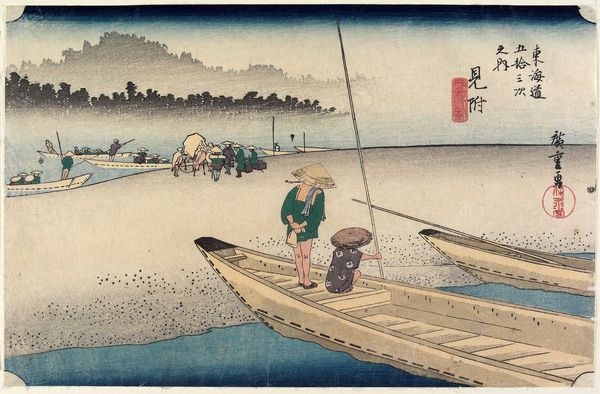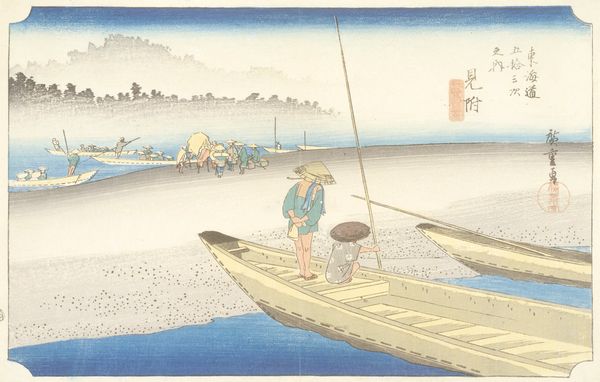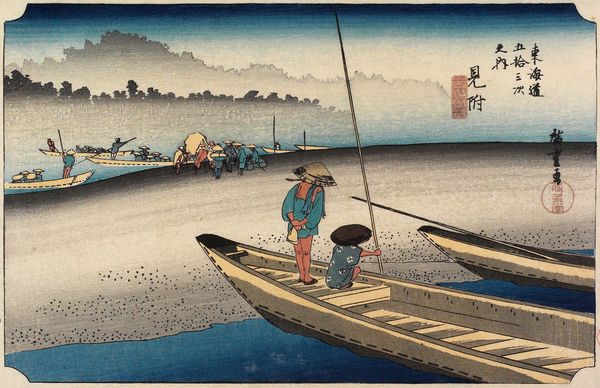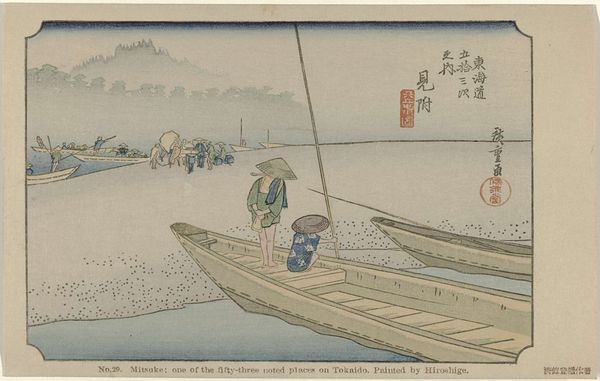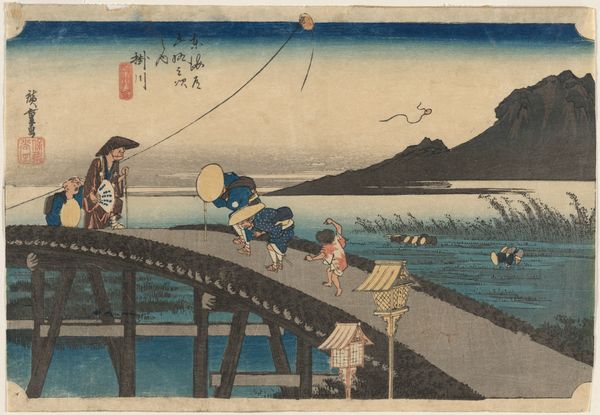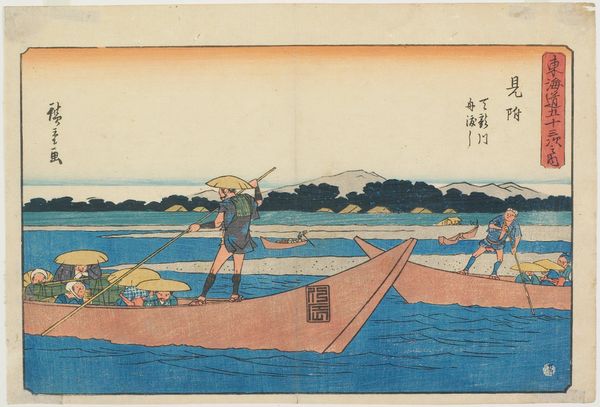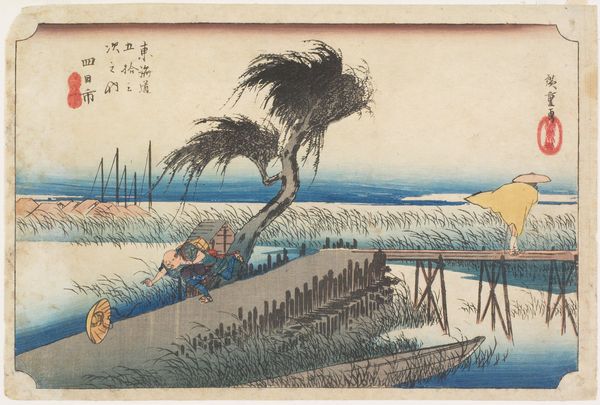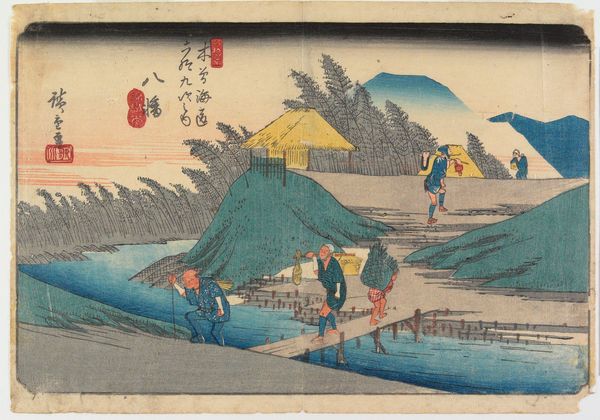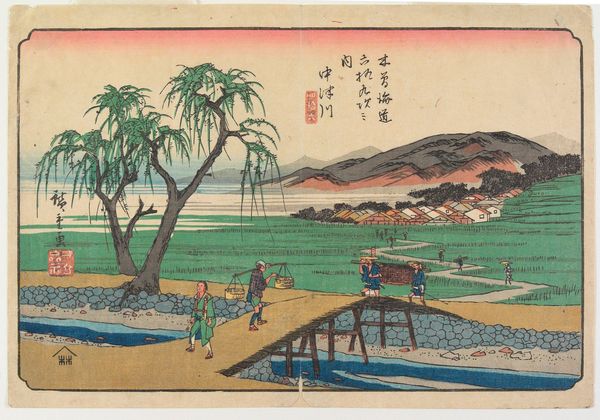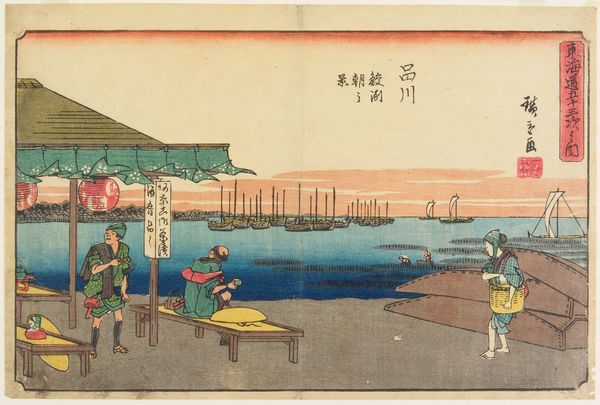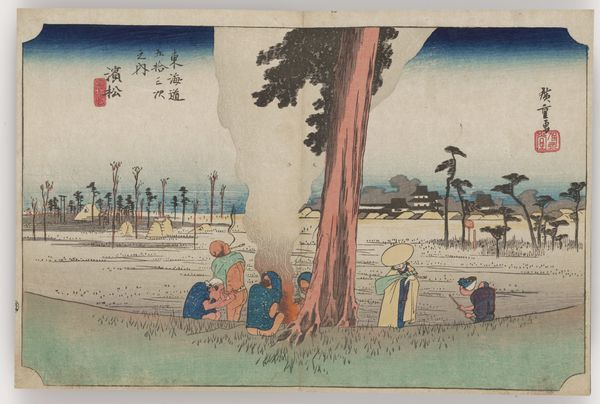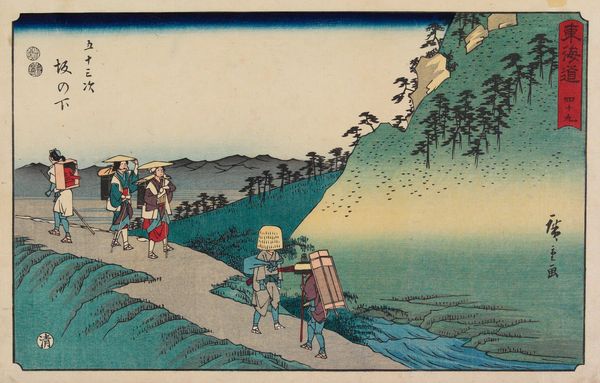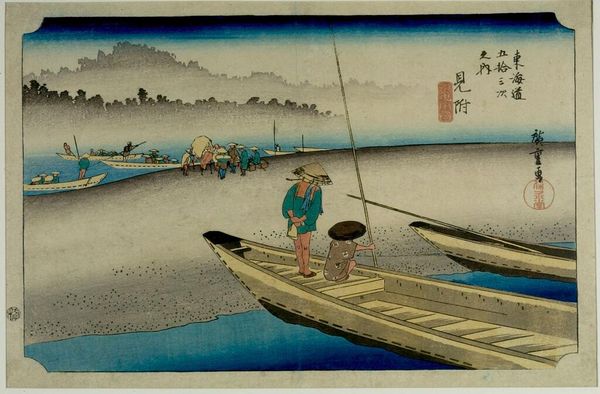
print, ink, woodblock-print
# print
#
asian-art
#
landscape
#
ukiyo-e
#
ink
#
woodblock-print
#
genre-painting
Dimensions: 9 1/2 × 14 1/4 in. (24.13 × 36.2 cm) (sheet, horizontal ōban)
Copyright: Public Domain
Editor: Here we have "Mitsuke-Tenryū River View," a woodblock print by Utagawa Hiroshige, dating back to about 1832. I'm struck by how the artist captured such a mundane scene, almost like a snapshot of everyday life. How do you interpret this work in the context of its time? Curator: It’s a masterful slice of life, isn't it? But look closer; consider the context of the Edo period. Hiroshige wasn’t just documenting; he was subtly commenting on social structures and the working class. The print highlights the grueling labor involved in transporting goods and people, underscoring the stark realities faced by commoners. Notice how they navigate the Tenryū River, a crucial but challenging artery of commerce. Editor: So, it's not *just* a scenic view, but also a social commentary? The figures seem quite small and somewhat anonymous. Curator: Precisely. Their anonymity, while visually part of the landscape, also speaks to their place within the larger social hierarchy. Ukiyo-e prints, while enjoyed by a wide audience, often reflect complex power dynamics. Think about who could afford these prints and what narratives were being consumed about different social groups. Editor: That makes me reconsider the whole piece. I was focusing on the aesthetic, but now I see a deeper story about labor and social structure embedded within the scene. Curator: And it’s important to acknowledge the politics embedded within landscape representation itself. Whose landscape is this? Who has access, who is working, and who profits? These are critical questions to ask. Editor: This has definitely changed how I view Utagawa Hiroshige's work. It is both visually captivating *and* historically rich. Thanks for the insight. Curator: My pleasure. The power of art lies in its ability to hold multiple, sometimes conflicting, truths. Keep questioning, keep digging.
Comments
No comments
Be the first to comment and join the conversation on the ultimate creative platform.
